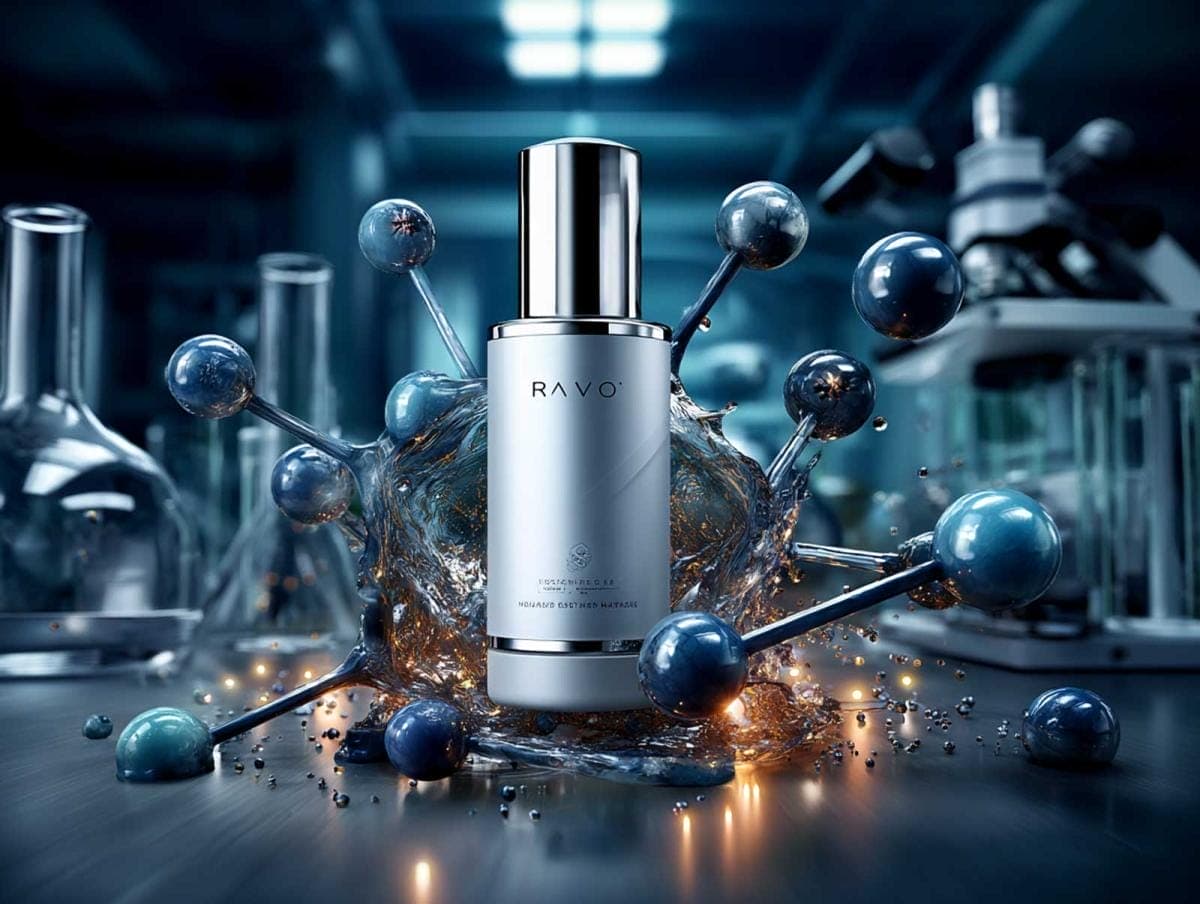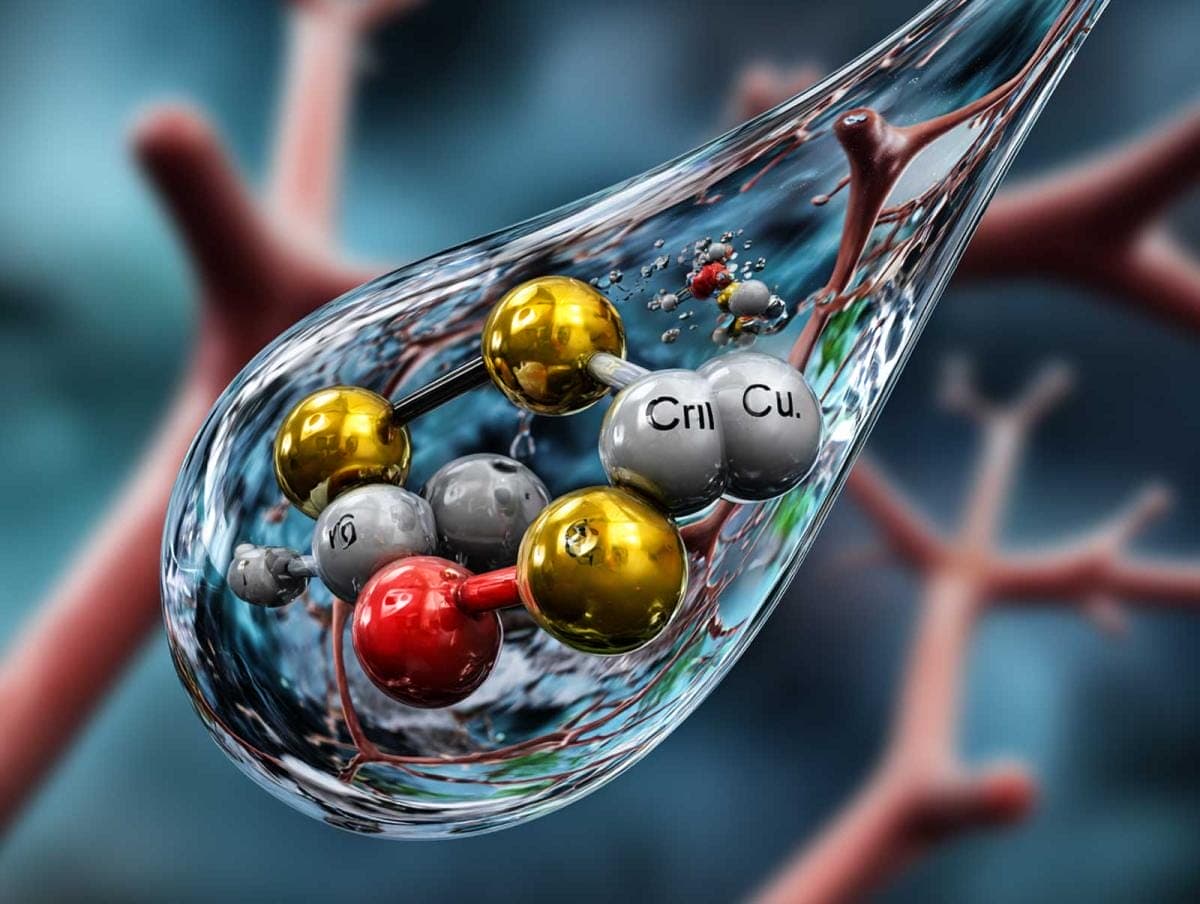Skincare
The Secret Role of Chelators in Skincare: Why They Matter More Than You Think
If you click on links we provide, we may receive compensation.
You might never see them highlighted on a product label. They don’t sparkle like retinol or hydrate like hyaluronic acid. But chelators are quietly working behind the scenes to keep your skincare stable, effective, and safe – especially if you live somewhere with hard water or metal-rich pipes. These tiny unsung molecules are the backstage crew of your beauty routine. And without them, things could get messy fast.
So, what exactly are chelators? And why should anyone care? Let’s break it down simply.
What Are Chelators in Skincare?
Chelators are ingredients that bind to metal ions, like iron or calcium, and prevent them from interfering with a skincare formula. The word comes from the Greek word “chele,” meaning claw – because chelators “grab” onto metals and hold them tightly. In chemistry, this process is called “chelation.” Think of it like a molecular clean-up crew. These molecules swoop in, grab harmful metals before they can react with other ingredients, and escort them out.
In skincare, chelators serve a few main purposes:
- They stabilize formulations
- They prevent oxidation (which can ruin a product)
- They improve the safety and shelf life of products
- They enhance cleansing, especially in hard water
That’s a lot of work for an ingredient you’ve probably never noticed on an ingredient list.
Why Do We Need Chelators?
Most skincare products include water as a base – and water can carry trace metals. These metals can enter a product during manufacturing, packaging, or when we use the product in metal-rich tap water. That’s where chelators come in.
If those metals are left free-floating, they can:
- Speed up the breakdown of delicate ingredients like vitamin C
- Cause discoloration or a funky smell over time
- Lead to unwanted chemical reactions
- Irritate the skin
Chelators help prevent all of this. They keep your serum clear, your cleanser foamy, and your moisturizer silky instead of gritty. In essence, they protect the integrity of the product and your skin.

Common Chelators Found in Skincare
If you start scanning ingredient lists for chelators, here are the most common ones you’ll find:
EDTA (Ethylenediaminetetraacetic acid)
This is the classic, workhorse chelator. You’ll usually see it listed as Disodium EDTA or Tetrasodium EDTA. It’s cheap, effective, and widely used. EDTA binds to calcium, magnesium, and other metal ions to prevent them from messing with the product formula. You’ll find EDTA in everything from toners and shampoos to sunscreens and cleansers.
Phytic Acid
Derived from grains and legumes, phytic acid is a natural alternative to synthetic chelators. It’s biodegradable and increasingly popular in natural formulations. Phytic acid also has mild exfoliating and antioxidant properties, making it a multi-tasker.
Gluconolactone
A polyhydroxy acid (PHA) that has chelating properties, gluconolactone is great for sensitive skin. It not only prevents metal ion reactions but also gently exfoliates and hydrates.
Citric Acid
You probably know citric acid as an exfoliant or pH adjuster, but it also has weak chelating abilities. It’s commonly used in rinse-off products like face washes and shampoos.
Sodium Gluconate
This salt of gluconic acid is often used in eco-friendly and sensitive-skin formulations. It’s a safer, gentler chelator than EDTA and more readily biodegradable.
Some products will even use a combination of chelators to improve performance and compatibility with different ingredient systems.
How Chelators Help with Hard Water
If you’ve ever struggled to get shampoo to lather or found that your cleanser leaves a weird film, your water might be the issue. Hard water is rich in minerals like calcium and magnesium. These minerals interact with soap, making it less effective. They can also clog pores and dull your skin over time.
Chelators help soften the impact of hard water. When included in cleansers or toners, they bind to these minerals, so they don’t react with the product or your skin. You’ll get better results from your face wash or body scrub, even if you live in a hard-water area. This is especially helpful for people with sensitive or acne-prone skin, as hard water can disrupt the skin barrier and trigger breakouts.
Chelators and Product Stability
Some of the most fragile skincare ingredients are prone to oxidation. Vitamin C, for example, oxidizes quickly in the presence of metal ions. The same goes for ferulic acid and many plant-based antioxidants.
Chelators prevent this kind of degradation. By neutralizing metal ions, they keep active ingredients fresh for longer. That means your brightening serum will actually stay brightening. They also prevent color shifts. Ever had a cream turn yellow or a clear serum go brown after a few months? That’s usually oxidation. With chelators in place, these changes can be slowed or even stopped.
For formulators, chelators are essential for keeping a product stable during manufacturing, shipping, and sitting on a shelf in someone’s bathroom for months.
Are Chelators Safe?
Generally, yes, but like all ingredients, there are nuances. EDTA has been the gold standard for decades, but it’s non-biodegradable. That means it can persist in waterways after rinsing off. It’s not harmful to humans in the small amounts used in cosmetics, but some brands are shifting toward greener alternatives like sodium phytate or gluconolactone. Phytic acid and sodium gluconate are considered safe, even for sensitive skin, and offer an eco-friendlier profile.
The bottom line? Chelators are safe when used in proper concentrations. Most skincare formulas use them in amounts of 0.01% to 0.1% – just enough to do the job without irritating the skin.
Do Chelators Benefit the Skin Directly?
Mostly, chelators work on the formula itself. But there’s growing interest in how they might directly impact skin health.
Metal ions on the skin can contribute to oxidative stress. This can age the skin faster and worsen conditions like eczema or rosacea. Some chelators, like phytic acid, may help by scavenging these metals before they cause harm.
Chelators may also assist in calming inflamed or reactive skin that’s aggravated by environmental factors like pollution or tap water. While they’re not active ingredients in the same way peptides or retinol are, they quietly support the skin by removing stressors that don’t belong.
In some advanced formulations, chelators are used alongside antioxidants to create “smart shields” against free radicals and urban pollutants. This is part of the trend toward anti-pollution skincare.

Do You Need Chelators in Every Product?
Not necessarily. Products that contain water (which most do) and are expected to have a long shelf life often include a chelator.
You’ll typically see chelators in:
- Serums
- Creams
- Toners
- Cleansers
- Shampoos and conditioners
- Sunscreens
Oil-based products like balms or pure oils generally don’t need chelators since metals won’t dissolve in oil. But emulsions, gels, and lotions almost always need them.
Chelators aren’t usually highlighted on the front of the bottle, but they’re quietly doing crucial work in the background.
What Happens When You Skip Chelators?
Without chelators, a product might:
- Lose efficacy faster
- Change color or smell
- Separate or become grainy
- Irritate skin due to metal contamination
- Trigger reactions with other ingredients
In short, omitting chelators can lead to spoilage, instability, and waste. For clean beauty fans, this can feel like a compromise. That’s why many natural brands are now using biodegradable chelators that are both effective and environmentally responsible.
The Future of Chelators in Skincare
With more brands focused on sustainability and transparency, there’s a shift toward next-generation chelators. These new ingredients aim to be:
- Biodegradable
- Non-irritating
- Naturally derived
- Multifunctional (offering antioxidant or hydrating benefits too)
Look out for ingredients like tetrasodium glutamate diacetate or trisodium ethylenediamine disuccinate. They offer similar performance to EDTA but with less environmental impact.
Some brands are also exploring marine-derived chelators and fermentation-derived acids that chelate while nourishing the skin.
As formulas get more complex and “clean beauty” gets more demanding, chelators will only become more important.
Should You Look for Chelators in Products?
It depends on your priorities. If you:
- Use vitamin C or antioxidant serums
- Live in a hard water area
- Have sensitive or inflamed skin
- Want longer-lasting products
- Prefer eco-friendly formulas
Then yes, checking for chelators makes sense. You might see them listed at the end of the ingredient deck under names like disodium EDTA, sodium phytate, or phytic acid.
They don’t need to be the star of the show. But their quiet work keeps everything else on stage performing at its best.
FAQs About Chelators in Skincare
Are chelators natural or synthetic?
Both exist. EDTA is synthetic, while phytic acid and sodium gluconate are natural or naturally derived. Many brands now choose eco-friendly versions to align with green beauty standards.
Do chelators irritate the skin?
Usually not. They’re used in very low concentrations and don’t typically penetrate the skin. However, if you have sensitivities, look for products with gentle chelators like phytic acid.
Can chelators help acne?
Indirectly. By improving cleansing performance in hard water and reducing oxidative stress from metals, chelators can support clearer skin. But they’re not acne treatments on their own.
Are chelators preservatives?
No. Chelators are not preservatives, but they support preservation by preventing metal-catalyzed breakdowns that could spoil a product.
Do oil-only products need chelators?
No. Chelators work in water-based systems. Oils and balms without water don’t usually require chelation.




